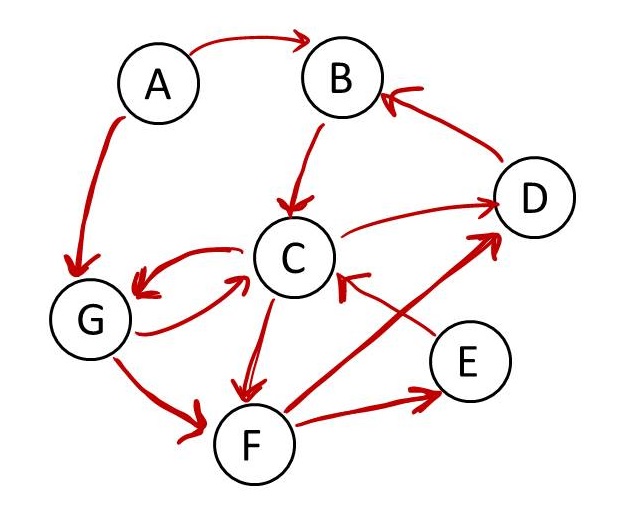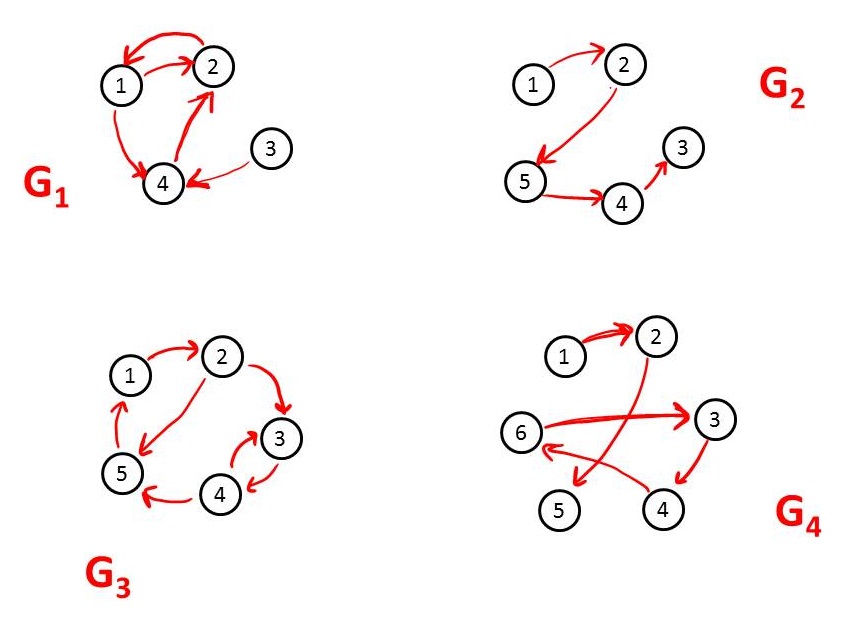ICS 6B
Fall 2013
Homework 5
Due: Wednesday, Nov 6
Covers Sections 3.1-3.2
-
Draw the arrow diagram and the matrix representation for the following relation
on the set {1, 2, 3, 4}:
R = { (1, 2), (3, 4), (2, 3), (2, 1), (3, 1) }.
-
For each of the relations below, answer the following three questions:
- Is the relation reflexive, anit-reflexive or neither?
- Is the relation symmetric, anti-symmetric or neither?
- Is the relation transitive?
If the relation does not have one of the properties, give and example illustrating this.
- The domain is a set of people. (x, y) is in the relation if person x is taller than person y.
- The domain is a set of people. (x, y) is in the relation if person x is a first cousin of person y (i.e.,
a parent of person x is a sibling of a parent of person y.
- The domain is a set of UCI students. (x, y) is in the relation if person x knows the student ID number for person y.
You can assume that every student knows his or her own student ID number.
- The domain is the set of real numbers. (x, y) is in the relation if x + y = 0.
- The domain is the set of real numbers. (x, y) is in the relation if x = 2y.
- The domain is the set of real numbers. (x, y) is in the relation if x - y is a rational number.
- The domain is the set of real numbers. (x, y) is in the relation if x ≠ y.
- The domain is A = {a, b, c, d}. The relation is {(a,b), (a, a), (b, b), (b, a), (c, d), (d, c) }
- Give an example of a relation on the set {1, 2, 3} that is neither reflexive nor anti-reflexive.
- Is it possible to have a relation on a set that is symmetric and anti-symmetric? If so, give an example.
-
Here are two relations on the set {a, b, c, d}:
- S = { (a, b), (a, c), (c, d), (c, a) }
- R = { (b, c), (c, b), (a, d), (d, b) }
Write down the set of pairs in S ο R.
-
Define the following relations on the set R:
- R1 = { (x, y): x ≤ y }
- R2 = { (x, y): x > y }
- R3 = { (x, y): x < y }
- R4 = { (x, y): x = y }
Use mathematical notation to describe the following relations:
- R1 ο R2
- R4 ο R2
- R3 ο R4
- R3 ο R2
-
The diagram below shows a directed graph G:

- Is (a, b) in G2?
- Is (b, e) in G3?
- Is (g, g) in G3?
- Is (g, g) in G4?
- Is (b, b) in G3?
- Is (b, d) in G5?
-
Draw a picture of G+ for each of the digraphs below:

-
Consider a digraph G in which each vertex has in-degree at least one.
Suppose that the relation defined by the edges of G is symmetric.
Is G+ reflexive? Why or why not?

